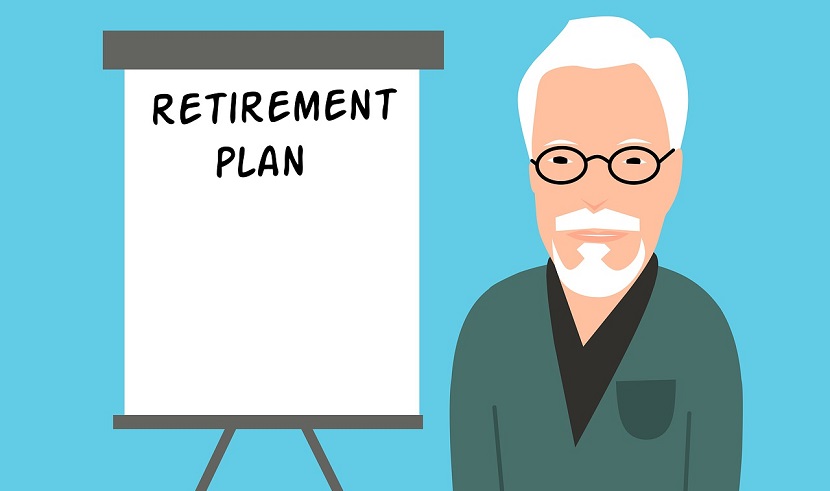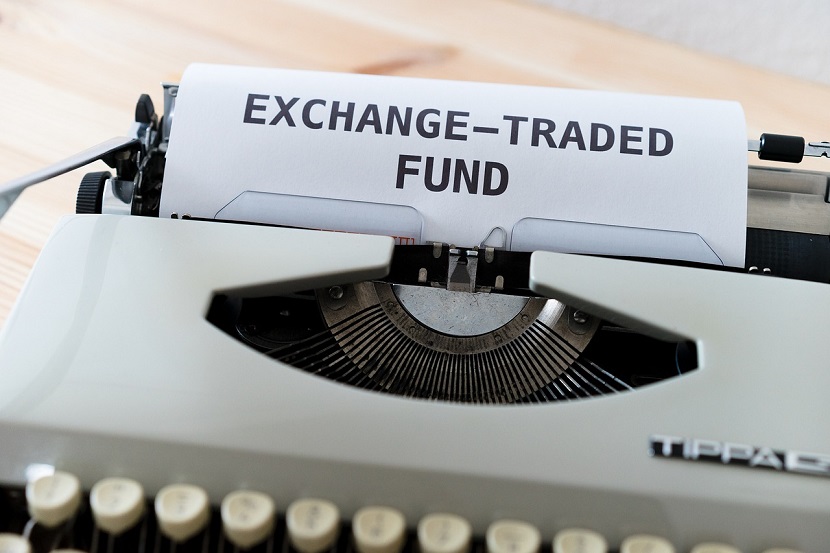Planning for retirement hasn’t changed all that much over the years. Although the physics are the same, current savers face a number of challenges that weren’t an issue in prior generations. You’ll need enough money to last a long time—possibly into your 90s—because life expectancy has soared. It is no longer feasible to purchase a few fixed income securities and generate a double-digit return because bond rates are significantly lower than they once were. This has become worse by the fact that more businesses are switching from defined benefit pensions, which assured you would have money in retirement, to defined contribution plans, which are more prone to market fluctuations. So, why is retirement planning important? After all, retirees want to take advantage of all the opportunities they missed out on while they were working.
In this retirement guide, we outline a number of steps that can help you create a personalized plan, from creating a budget and setting goals to selecting the best retirement savings account.
How much money is important for you to put up for retirement planning?
Even if retirement planning is not very challenging, you will need a road map to keep you on course. This route map should ideally be flexible over time. As a place to start, think about how your life might be in retirement. Then consider what everything will cost. Therefore, budget for greater prices in the coming decades. You should also take into account your regular expenses, such as rent or mortgage payments, food costs, and medical care. Remember that as you approach retirement, some of the expensive expenses you currently have, like a mortgage or child care costs, may no longer exist. This could lead to a reduction in your overall expenses.
Next, total up any future earnings you might have once you stop working. Include any pension income you may have, social security payments, and any other income you may receive, such as rental income from a property. You can determine how much money you’ll need to save for each year of retirement by matching your income and expenses.
What is the important golden number for retirement savings? Some financial experts advise saving between 80% and 90% of your yearly pre-retirement income, or twelve times that amount. These figures and formulas can serve as a general guide, but they are not infallible because every person’s circumstances are unique.

When is important to begin with your retirement planning?
However, it’s fine to save money initially for requirements that are more urgent. You cannot begin to contemplate retirement until you are in your late 30s or early 40s. Also, you shouldn’t wait much longer than that, as it will take some time for the money you put into a retirement account to grow. The challenge will become much more challenging the longer you wait and the more money you’ll need to set aside annually.
Here are some things to consider before you begin:
It’s important to draw up a budget for your retirement planning
This budget shall account for all of your expenses and revenue as of right. You must make sure that you have the funds to save even though you should have an idea of how much you’ll need to set aside each month based on your retirement goals. It’s a good idea to include retirement savings as a line item in your budget, along with expenses for food and housing, so you can set aside money each month.
Configure automatic transfers
To ensure that you don’t forget to save, you can set up this tool between your checking account and retirement account. Set up your investments so that funds you are saving for the future are transferred from your bank account into them on the same day each month, perhaps the day you receive your paycheck. You won’t run the risk of wasting that money if you go about it this way.
Make an emergency savings account
If you have an independent emergency fund, typically with three to six months of pay saved up, you can handle any unforeseen expenses without jeopardizing your retirement goals.
Reduce your debt
To retire debt-free at 65 should be everyone’s objective. This covers all substantial loans, such as credit card debt, especially those incurred through high-interest reward cards, mortgage and car loans, student loans, and other substantial loans. You don’t want to owe money as you start your years of inactivity, which is the simple rationale.

What types of investment accounts should you use?
The most important aspect of planning your retirement savings is, of course, setting aside a particular amount of money each month. But until you invest that money in the market, you won’t succeed in your endeavor. One justification for investing is to benefit from the force of compounding, in which one gain builds upon another. That compound growth can significantly increase returns over time. Whatever account you choose, your investments will continue to grow over time. However, depending on the account, there are differences in the amount you can save and the potential tax you will later owe.
Here are several types of accounts that you can utilize to save for retirement:
Account with a high rate of return
Although there is no risk involved because money in a federally insured savings account are not invested in stocks or bonds, you will make virtually nothing on the money in the account. In a more conventional investment savings vehicle, your money should increase more in value over time.
Individual Retirement Account (traditional IRA)
People can designate their retirement assets through the tax-advantaged investing vehicle known as an IRA. IRAs can be of a variety of sorts and have a range of tax obligations depending on the person’s work situation. It’s an individual account that you open and fund yourself, as the name implies. The fact that contributions to the traditional IRA are typically tax deductible is one of its advantages.
Additionally, the funds in the account can increase tax-deferred, meaning that you won’t have to pay taxes on any investments until you release the funds. This makes it possible for your money to compound more quickly than it otherwise would. The amount you withdraw from the account will be subject to taxation, but only at your current tax rate. That’s advantageous because your tax burden on those withdrawals will be minimal because you’ll be in a lower tax bracket given that you typically make little money in retirement. Annual changes may be made to the maximum contributions and income restrictions for IRAs. However, you must begin withdrawing funds from your IRA after you age 72. The minimum required payout varies depending on the size of your account and how long you want to live. You risk a significant tax penalty if you don’t remove the required amount.
Roth IRA
Traditional IRAs and Roth IRAs differ from one another in two significant respects. The first is that when investments are made with after-tax money, there is no tax deduction for donations. The benefit is that you won’t owe the IRS anything when it’s time to withdraw. Therefore, all of your donations may increase over time without being subject to tax. The maximum contribution amount cannot be exceeded by your combined assets, even if you split your contributions between a normal 401(k) and a Roth 401(k). For those who believe they might retire in a high tax bracket, this account is ideal.
Plans for Simplified Employee Pensions (SEPs)
The SEP plan may be your best option if you’re a self-employed individual trying to save for retirement. This account is similar to a typical IRA in that pre-tax contributions lower your taxable income. Moreover, money can grow tax-deferred until you withdraw it in retirement. However, only business owners with one or more workers or those who work for themselves can form it. You can also contribute to an employee’s account, but unlike a 401(k), which costs more to set up than a SEP, the employee is not permitted to make contributions to their own SEP.

What is important for retirement planning investments
Years ago, investors with an eye on retirement had the greatest potential to invest in a balanced mutual fund, which is typically made up of 60% stocks and 40% bonds. Investors now have more options, even though savers favor that asset mix, because it provides some safety from bonds and some growth from equities. Here are a few of the more well-liked investing choices:
Stocks with potential
The majority of savers continue to purchase stocks, which are shares in a publicly traded corporation, either directly or through a mutual fund or exchange-traded fund. People purchase stocks because they have a history of long-term price increases. In other words, there is a good chance that your money will have increased over the course of 40 years if you invest in stocks in your 30s and retire in your 70s.
The risk is that equities could decline. Fortunately, there are many different stock types to pick from based on your level of risk tolerance, even though the prices of all stocks vary. More conservative investors might concentrate on blue-chip companies in industries like financials, consumer staples, or industrials, where there has historically been less potential for the biggest gains but also less volatility. If you are a more aggressive investor, you might tilt your stock portfolio toward sectors with higher growth potential but also more volatility, such as technology. However, there is a danger of loss with every stock, and volatility profiles have changed recently. The greatest strategy to reduce exposure to market volatility is to invest in broad equity funds as opposed to individual equities or investments in small sectors.
Security bonds
Bonds are another well-liked option among savers since their prices fluctuate far less than those of equities. A government or business borrows money from investors in return for an annual payment based on a predetermined interest rate. You receive your initial investment back after that bond’s term, which is typically between one and 30 years, is over. Bonds are popular among investors for two reasons: they provide a fixed annual income and, depending on the type of bond you purchase, lower risk of financial loss. Because of this, bonds often move less than stocks do, balancing the overall ups and downs of a portfolio.
But bonds aren’t flawless. First off, there are many bond types with various risk levels. The risk of default is typically low for Treasury bonds, which are fixed income securities issued by the federal government. The same cannot be said for some local governments, which also raise funds through bond issues, or for businesses that might be experiencing financial difficulties.
Additionally, because interest rates are currently so low, holding fixed income rarely generates any profit. Additionally, bond prices decline as rates do, and vice versa. You will have to sell your bond for less money than you paid for it if you need to sell it before the maturity date and yields rise. Another factor is that most people opt to own bond funds rather than individual bonds because it is challenging for the average person to purchase a single bond. Bond funds hold a variety of fixed income instruments. The value of the fund can change based on where interest rates go. Many people believe that because interest rates are now so low, they will eventually need to increase, which could have a negative effect on the cost of your bonds.
Different asset classifications
There are many additional options for investments, and most experts advise holding 5% to 10% of assets in alternatives to stocks and bonds. Because the price of gold tends to increase during recessions and significant market falls, it is a well-liked investment. You can also acquire other types of commodities, such as oil or silver, or you can experiment with futures and options, depending on your degree of understanding. Before making any unconventional investment choices, it is a good idea to consult with a professional.

Which investments should you choose?
When you work on your retirement planning, there are many different fund types to take into account. The most popular choices are listed below.
Mutual funds that are actively managed
The most common type of asset among retail investors, these funds have been operating for many years. In one investment vehicle, they hold a variety of stocks, bonds, and occasionally both. For consumers who don’t want to pick their own investments, mutual funds is the best option. Instead, a qualified fund manager can handle it on your behalf. Invest in an international stock fund if you want to own a variety of foreign stocks but don’t want to choose specific companies. Fees and flexibility are the biggest negatives. Fees for actively managed mutual funds are greater than for other investing vehicles since someone else is choosing the stocks.
Indexed funds
In contrast to active mutual funds, index funds do not employ stock pickers. These funds follow an index that serves as a benchmark, such as the S&P 500 or the inclusive MSCI World Index. The fact that most traditional mutual funds don’t outperform their benchmarks, especially when increased costs are taken into account, is one of their problems. Since their returns are identical to the index they follow, index funds were created to prevent underperformance. A management fee is charged, but it’s considerably lower than what you may find on a conventional mutual fund. Similar to actively managed mutual funds, you cannot sell them during the trading day and they only receive prices at the close of business.
Exchange-traded funds (ETFs)
Exchange-traded funds, often known as ETFs, are similar to traditional mutual funds in that they contain a variety of assets, such as stocks or bonds, and they are similar to index funds in that many of them follow a benchmark. They vary, though, in that they can be purchased and sold at any moment of the day since they trade on a stock exchange, where prices are updated in real-time. Although long-term stock holders in retirement are less likely to care about it, you never know when you might need to sell anything. In particular, index ETFs are reasonably priced. Some have management expense fees of zero, while others have charges of 2 to 10 basis points (0.02% to 0.10%). As you’ll see later, the more money you can save on fees, the more money you can put toward your retirement. This is why they have experienced such rapid growth.

Target date funds
Target date funds, a form of all-in-one mutual funds or ETFs that automatically alter their asset class mix as you age, are one of the most well-liked 401(k) investments today. The stock and bond mix will vary as you become older. A 50/50 portfolio becomes the allocation when the fund reaches its target date. After the designated date, the allocation will keep moving toward bonds for about seven years.
Create a portfolio
Many people enjoy doing their own investing, but it’s a good idea to engage with a financial advisor who holds a certified financial planning credential when it comes to retirement savings. Your time horizon and level of risk tolerance are two important topics to discuss when establishing a portfolio, therefore this will likely be one of the first topics of conversation you have with an advisor. The majority of advisors advise their customers to become more cautious as they age because there is less time to recover from a decline. That doesn’t mean you should own more bonds than stocks, but if your asset allocation at the time of retirement was, let’s say, 80% stocks and 20% bonds, you might want to be closer to 50-50.
Consider fees
Since fund management and trading costs can reduce returns, it’s critical to evaluate them. On some deals, commissions are necessary, even by do-it-yourself investors. Compared to index funds and exchange-traded funds, active mutual funds are often more expensive. Due to competition from index funds and ETFs, fees for active funds have decreased. The Investment Company Institute estimates that the typical equity mutual fund cost is currently at 0.5%. However, the majority of index ETFs and mutual funds are still less expensive. A few recently introduced ETFs have no costs at all. Expect more funds to cut their pricing in the upcoming years as there is a significant trend toward lower-fee investing, even if they are not entirely fee-free. Additionally, some active mutual fund companies are beginning to introduce their own active ETFs.
How to increase your wealth in your retirement planning
While your investment portfolio plays a significant role in the calculation of your net worth, which you can find by adding up the value of your assets and deducting your debt, it’s not the only factor that may have an impact on how well-off you’ll be financially in retirement. Here are five suggestions for boosting your net worth.
1. Purchase a house
A house may wind up being your most valuable asset, depending on where you live and when you bought your home. Many people sell their homes later in life and use the proceeds to help finance their retirement planning. Due of its propensity to increase in value over time, real estate may be a fantastic investment.

2. Sell your business
A business can significantly increase or decrease a person’s net worth. Even though many businesses do enable their owners to make a respectable income, they are typically difficult to value, illiquid assets that take time to sell.
3. Make a pay raise
Most people aspire to accumulate steadily higher sums of money over their lifetime. More money means more opportunities to save, pay off debt, invest in other assets, and more.
4. Reduce spending and debt
Do everything you can over time to pay down your mortgage, auto loan, and any credit card debt because doing so enhances your net worth. Consider reducing some of your spending at the same time.
5. Invest in life insurance
This is a little different from the others, but if you pass away suddenly and are unable to work anymore, your family’s net worth will undoubtedly decline dramatically. Think about getting life insurance for them. Although some varieties do include an investing component that you can access later in life, it won’t help you in retirement, but it will support your husband and children if something goes wrong.

How to bounce back from a failure
Everything from your net worth to your assets to your retirement planning will probably encounter a setback at some point because life does not proceed in a straight line. The important thing in all of this is to remain calm and follow your plan. Selling out might be the worst step you can make because you might not be able to recover your losses in the event of an upswing.
Don’t freak out if the market does decline. Continue making your monthly contribution; while you may lose some of it as the market declines, you’ll also end up buying stocks at bargain prices that will appreciate significantly as stocks rise. If you lose your job or become concerned about a decrease in income, review your budget to see where you can make savings. Try to wait until it’s impossible to save any more.
If you do experience overwhelm, this can indicate that your risk tolerance is off. If you’re concerned about losing too much money, you might need to have a more cautious portfolio where a market downturn won’t affect your assets or your mental health.



